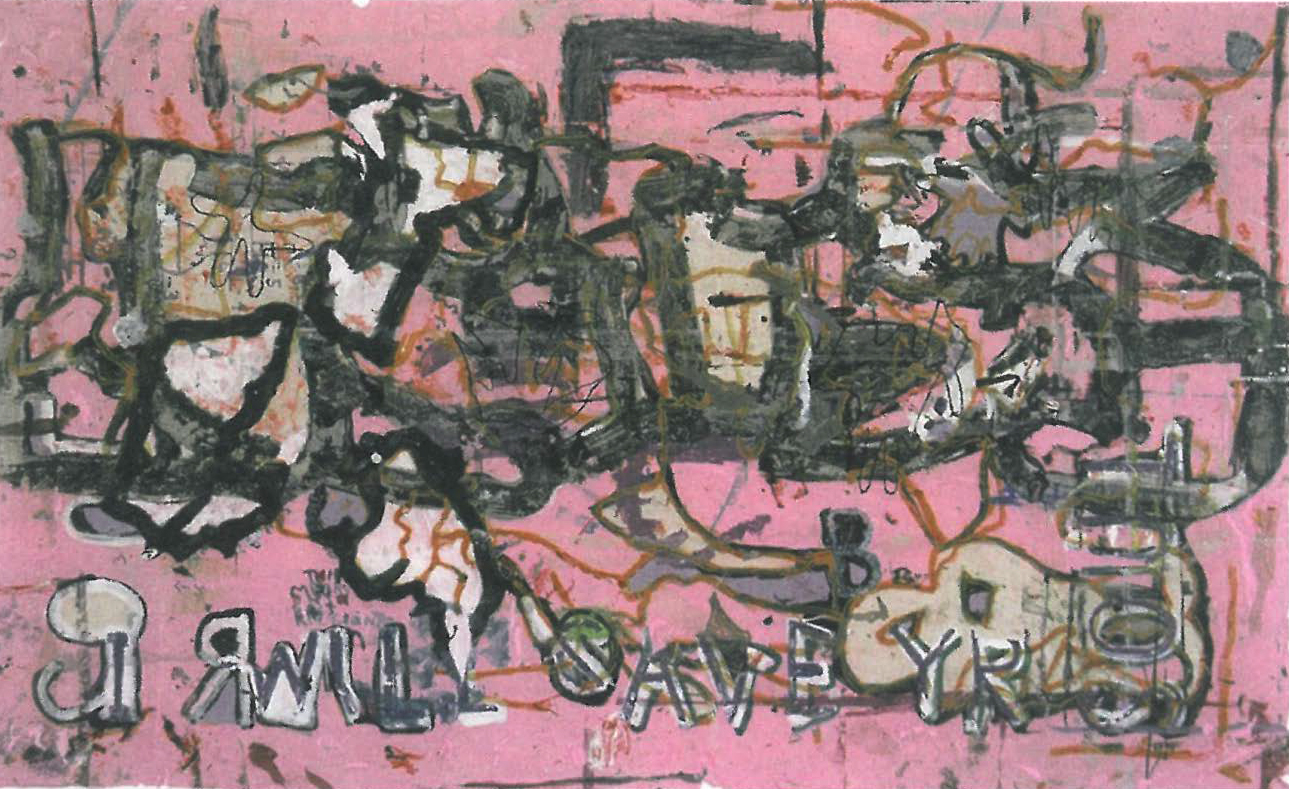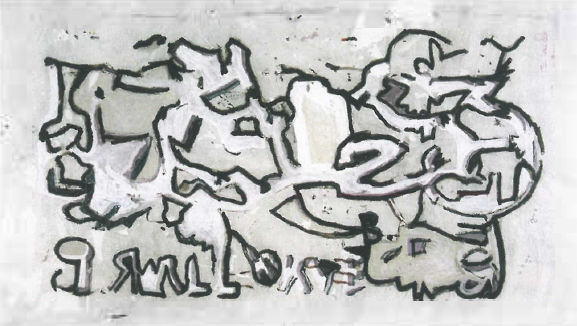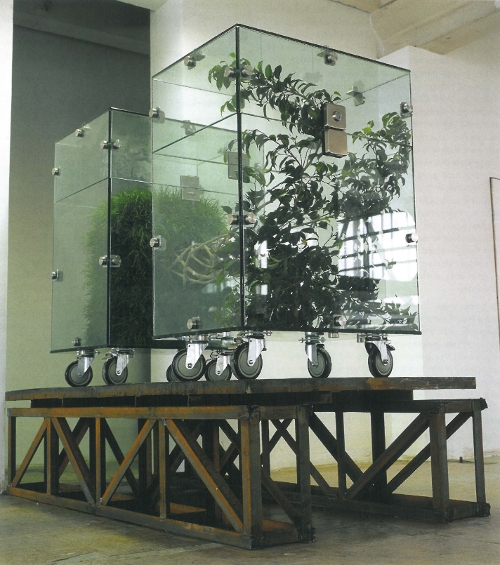
Painter Paul Hoban's stated primary preoccupation is with the syncretism of cultures, a visual 'reconciliation of the archaic and modern'. It is a visual resolution which has subtly enriched many earlier paintings, like the white markings of Roussel (1999) that allude to both a Nigerian divination ritual and Roussel's avant-garde manipulation of brackets. Exhibiting with Greenaway Art Gallery at Madrid's ARCO 2003 in February, Hoban visited a number of prehistoric European cave sites, which have been inspirational terrain for artists including Louise Bourgeois. Thus the antler patterning of the lilac/off white N.U.T.S. (Nothing up the Sleeve) refers to Palaeolithic wall paintings at Lascaux in France's Dordogne region, while the hand leitmotif which recurs throughout 4MAL derives from the curious archaeological drawings of hands at the Gargas Caves in the French Pyrenees. More than a mere play on the dual interpretations of the word 'digit', the latex gloves and CD discs of the mixed-media works DGZ are a more overt representation of Hoban's preferred synthesis of the ancient and modern.
To say that Hoban's paintings are dense with eclectic references is something of an understatement. An ever-proliferating array of influences (anthropological, philosophical et al) includes African and Christian iconology, Neolithic sites in Ireland and England, sacred diagrams specific to certain societies within indigenous Australian, African and Caribbean cultures, Outsider art, knot theory, mathematical formulae and graffiti. Yet, allied to this predilection for a complex layering of allusions, is a no less consuming preoccupation with process.
Employing an idiosyncratic process of reversal, Hoban paints on plastic 'skins' on the studio floor, which typically bear residual traces of earlier paintings. In the transferral of the back-to-front paint skins onto canvas, Hoban is able to dispense with an aesthetically determined outcome, as the self-conscious subject, the refined, the reduced, the 'finished, the autonomous surface is overthrown'. A further element of happenstance is introduced with the deployment of a variety of (self-constructed) distancing devices (such as a customised compass) for the purpose of mark making. Hoban is also interested in the 'elaboration of pattern perception through repetition' and to this end there is often the adoption of automatic techniques of composition.

Having arrived at the conclusion that black paint skins have a tendency to 'dominate outcomes,' Hoban has in his most recent body of work, for the first time elected to utilise skins of clear plastic. It is this decision that would seem to account for a dramatic lightening of the palette. Lending weight to this theory is the discovery that the two paintings with the most intensively worked surfaces - which incorporate maps of Manhattan and Kabul - are the only ones painted on black skins. 'Colour,' says Hoban, 'is critical', adding that he uses it 'to differentiate actions.' Characteristically sombre hues of black, grey, dark green occasionally leavened by bright gold or red, make way in works like I.N.C.A. and N.U.T.S. for pale grounds and a greater openness of surface.
In yet another development first signalled by the aptly titled Rent (1995), Hoban has initiated a 'mock-formalist' experimentation (playfully indicated by the title of the exhibition) into the elasticity of his paint skins by tearing holes in the surface, which then become remnants integrated, Burroughs-like, into other works. In the way that earlier traces of paint infiltrate subsequent works, these torn fragments confer a sense of (sometimes subversive) continuity within Hoban's oeuvre.
Intermittently legible, alternately fragmentary or inscribed with an almost obsessive intensity, text has hitherto assumed a prominent role in Hoban's work. Notwithstanding the declaration 'I will save your soul', which is emblazoned across the startlingly candy-pink Soul, text is subordinate to both motif and process in 4MAL's series of paint skins on canvas.
Through a vertical partitioning of surface, apparent in the gold/purple/black strips of Door, the formerly discrete but symbiotic panels of Hoban's diptychs have become integrated into a single, autonomous work. Emphasising the importance of decentreing the composition (N.U.T.S.), he has recently begun to fold and overlap sections of paint skins, thereby incorporating the margins into the body of a painting (Door). For Hoban who views the edges of works as a metaphor for the marginalised, it is a symbolic as well as technical stratagem.
Alluding to the paintings for Hoban's 2001 exhibition at Greenaway Art Gallery, catalogue essayist John Barbour made the observation that, 'As idiosyncratic, intriguing, discursive and encoded as they appear, they are yet totally unprecious'. Conceptual complexity and a process which approaches the convoluted, in no way negate perceptual accessibility, as Hoban's paintings continue to impart a quality of rawness and even spontaneity. The binary, potentially divisive impulses within his work exist not so much in creative tension as fertile collusion. Many artists work while listening to music and Hoban is no exception. However, he also paints surrounded by piles of books - and therein lies the seduction.












